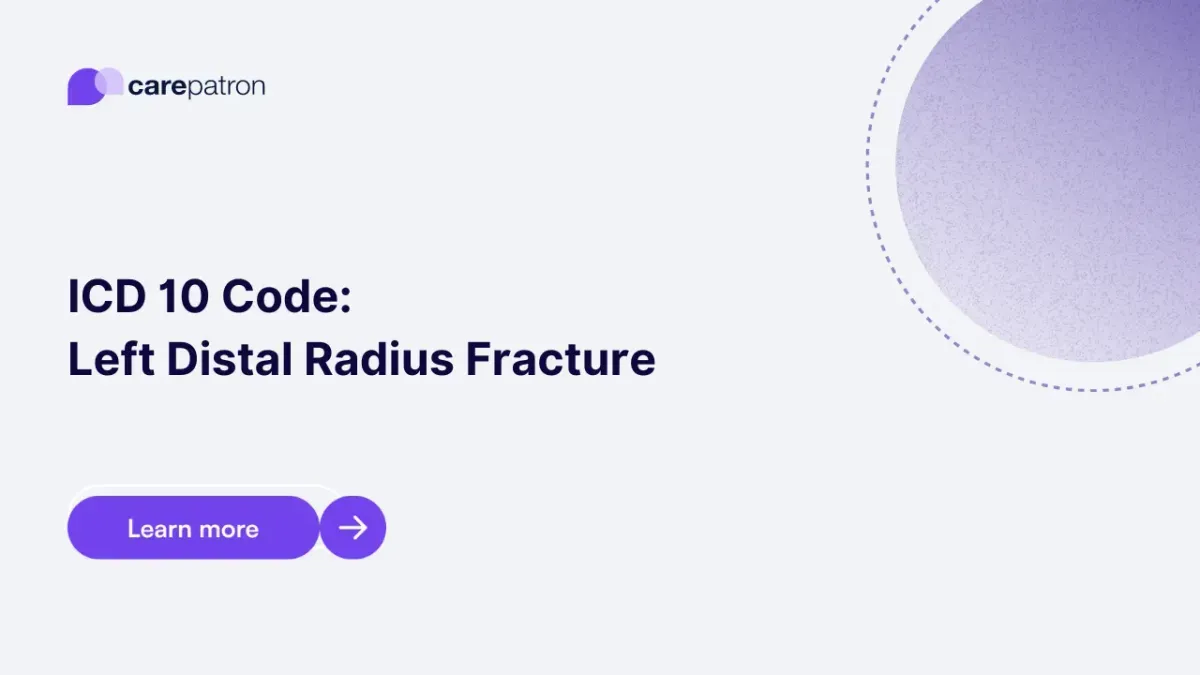
Left Distal Radius Fracture ICD-10-CM Codes | 2025
Read this short guide to learn about Left Distal Radius Fracture ICD codes you can use!
Use Code
Commonly asked questions
If a person has a left distal radius fracture, they will have difficulty moving their left wrist, or they won’t be able to move it at all, especially after an accident, all the more if the wrist is swollen, bruised, and painful.
Falling and landing on the ground with your hands puts you at risk of breaking your wrists. Vehicular accidents can also cause such fractures.
People who partake in strenuous physical labor or participate in sporting events are also at risk of breaking their wrists.
Through imaging tests, they can determine the location of the left distal radius fracture and its severity.
EHR and practice management software
Get started for free
*No credit card required
Free
$0/usd
Unlimited clients
Telehealth
1GB of storage
Client portal text
Automated billing and online payments
